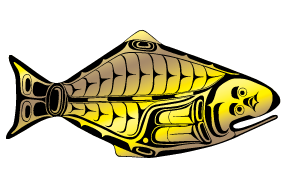The estimation of discard mortality for each fishery or fishery group requires the estimation of the number and the size composition of the discarded Pacific halibut, categorized by injury or condition; the application of a survival (or a mortality) probability (i.e. discard mortality rate (DMR)) to those fish in each category to derive the mortality by category; and, finally, aggregating this mortality by fishery and period (Leaman and Stewart, 2016). Estimates of numbers, size, and condition are obtained from national observer programs.
Estimation of viability of discarded Pacific halibut has been examined in captive holding experiments, experimental studies of Pacific halibut physiology and response to stressors, survival studies for other species and gears, development of relative viability estimates from condition and injury assessment combined with tag-recapture studies, and modelling studies involving both empirical and experimental observations.
There have been two historical experiments involving capture of Pacific halibut from commercial fishing gear and subsequent holding to estimate mortality. One of these experiments (Peltonen 1969) involved longline capture and used long holding periods, as well as tagging of released fish to estimate long-term survival. The other experiment (Pikitch et al. 1996) involved trawl capture and had larger sample sizes but used much shorter holding periods and did not utilize individual fish condition in predicting mortality. In addition to these historical experiments there has been a series of more recent holding experiments examining capture and release mortality, using commercial fishing gear and handling practices. These latter experiments were associated with the Commission’s development of tagging protocols for a coastwide passively integrated transponder (PIT) tagging experiment (Kaimmer and Geernaert, 2002).
Trawl-induced injuries arise from a variety of sources: compression and bleeding of Pacific halibut in the trawl’s codend associated with the weight of the target species; clogging of the gills with sand or mud as the trawl net is dragged across the sea floor; lacerations from spines or carapaces of species also caught in the net; and, abrasions from debris or the scales of other species (e.g., sharks), duration of the tow, amount of time on deck before being returned to the water, and potentially predation upon return to the water.
Longline and pot capture can result in fewer injuries and, in general, better fish condition at release. However, this is not always the case, especially concerning release from longline gear in cases where careful release methods are not practiced. Longline-capture injuries can occur in the form of torn jaws, cheeks, facial areas, eyes, and gills arising from hook removal; gaff wounds also associated with hook removal, amphipod predation while on the hook; and, potentially predation upon return to the water.
Pot capture injuries are primarily associated with interactions of Pacific halibut with other species in the catch (e.g., lacerations, abrasions from contact with other species or intrusions by sand fleas).
Results from these experiments have been summarized into three condition categories used to categorize Pacific halibut that are discarded in trawl, and pot fisheries; and four categories for longline fisheries (organized as dichotomous keys used by observer programs e.g. AFSC 2015; Appendix 1).
The IPHC continues to actively study physiological influences and best practices to both minimize Pacific mortality and refine accuracy to best estimate discards of Pacific halibut.
References
Alaska Fisheries Science Center. 2015. Observer Sampling Manual. Fisheries Monitoring and Analysis Division, North Pacific Groundfish Observer Program, AFSC, 7600 Sand Point Way, Seattle, WA 98115
Kaimmer, S.M. and Geernaert, T.O. 2002. Pilot studies on the use of PIT tags in Pacific halibut. Int. Pac. Halibut Comm. Report of Assessment and Research Activities 2001: 301-312.
Leaman, B.M., and Stewart, I.J. 2016. 2.12 Research basis for estimated Discard Mortality Rates used for Pacific halibut in longline and trawl fisheries. Int. Pac. Halibut Comm. Report of Assessment and Research Activities 2016:133-172.
Peltonen, G.J. 1969. Viability of tagged Pacific halibut. Int. Pac. Halibut Comm. Sci. Rep. 52.
Pikitch, E.K., Erickson, D., Oddsson, G., Wallace, J., and Babcock, E. 1996. Mortality of trawl-caught and discarded Pacific halibut (Hippoglossus stenolepis). Int. Coun. Explor. Sea, Fish Capture Cmttee. CM. 17pp.

